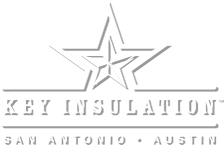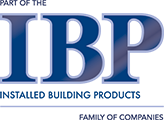Key’s New Addition!

We are excited to announce the birth of Gunnar Ty Griffin! JJ and Kim Griffin, welcomed their baby boy on February 19th at 12:55pm weighing in at 6lbs 13oz.
Spray Foam Architect’s Guide
Spray Polyurethane Foam Guide for Architects and Specifiers
Architects, designers, and engineers have utilized the many benefits and unique characteristics of spray polyurethane foam (SPF) for nearly half a century. SPF is a versatile energy efficient material that provides many solutions for the residential and commercial construction markets. ![7fbfb295c7a108594713d52a9b0cd654f73906fc[1]](https://www.keyinsulation.com/wp-content/uploads/2017/08/7fbfb295c7a108594713d52a9b0cd654f73906fc1-535x268-1.png)
- SPF is changing the way homes and commercial buildings are constructed, in accordance with modern building science goals: greater energy efficiency and lasting durability.
- SPF Insulation combines high thermal resistance (R-value) with air and vapor barrier properties, and in some cases strengthening properties.
- SPF Roofing Systems provide commercial building owners with lightweight, monolithic, energy-saving, and sustainable roofing options. SPF has also proven itself as a very strong performer against conventional roof systems in hurricanes and other high-wind events.
- SPF Adhesives have become the preferred method of installing roof board insulation, roof coverings, and tile roofing, versus mechanical fasteners, which can lead to water intrusion and thermal bridging.
- SPF Sealants are the ideal solution for air sealing and weatherization applications by shoring up gaps in door and window assemblies and cracks in the building envelope.
Consumers and facility managers are becoming more educated and more demanding about the building materials used in the construction of their properties. They are seeking the best, highest-performing, and sustainable materials to benefit their buildings, the buildings’ occupants, and their bottom line. At face value, spray foam appears more expensive than alternative insulating materials, but a mere luxury good it is not; it can actually help to save on operating costs and create much greater value and performance over time.
Considering the impact of spray foam’s unique characteristics–robust insulation characteristics plus air and vapor barrier properties–on a home or building’s energy consumption, monthly savings on energy bills can recoup the additional cost of SPF in the span of a few years. You get what you pay for, and with spray foam, you get a combination of performance characteristics no other building product can offer by itself.
Additionally, by performing more than one function, SPF can save builders on the costs of materials and labor during construction.
If you really look at these benefits, SPF is actually less expensive and far more valuable over time–isn’t that what sustainable design and “green” building is all about?
A Home Energy Audit Leads to Increased Home Comfort!
By RESNET
What many people may not realize is that the comfort of their home is closely tied to how energy efficient their house is. There are few things more uncomfortable than sitting in a cold and drafty living room during the middle of winter (and this in spite of having set the thermostat on high), or trying to fall asleep on a hot summer’s night when the air-conditioning just doesn’t seem to be kicking in. And let’s not even get into how much you’re paying in utility costs each month!
The fact is, high energy costs and uncomfortable homes are directly related through a lack of home energy efficiency, and that’s where energy audits can provide some much needed relief.
What Are Energy Audits?
Energy audits, also known as energy assessments, identify where and how a house is losing energy, which systems are working inefficiently (i.e., heating and cooling, ventilation, etc.), and will propose cost-effective solutions to rectify these problems.
How Many Types of Energy Audits Are There?
Certified RESNET Home Energy Auditors offer two different types of energy audits that you can choose from:
- Home Energy Survey
A Home Energy Survey is a visual inspection that doesn’t involve the use of any diagnostic testing equipment. Its purpose is to assess the general energy performance of an existing home including:
- Building envelope features (windows, doors, insulation, ducts) and ages
- Heating, cooling and ventilation equipment types, characteristics and ages
- Appliance and lighting characteristics
- Comfort complaints
- Visible moisture issues
- Visible health and safety issues
The process includes a review of your energy billing history and utility usage in order to better understand where savings can be achieved. A full report of the assessment is provided, including basic recommendations on how you can improve your home’s energy efficiency, as well as low-cost, DIY tasks. Also included is information on relevant utility-based programs that could help you cut down on your energy usage.
- Home Energy Rating
Of the two energy audits, the Home Energy Rating is the more in-depth one. It consists of everything included in the Home Energy Survey, but goes much further by also providing diagnostic testing using specialized equipment (i.e., blower door test, duct leakage test, infrared camera, etc.) and a computerized simulation analysis using RESNET Accredited Rating Software to calculate a rating score on the HERS Index. The report also gives you a cost/benefit analysis for recommended improvements and the expected return on investment.
Lower Utility Bills, Improved Quality of Life…What Could be Better?
A home that’s not energy efficient is costly not just in terms of money but also health. Energy audits can help stop energy loss in your home, leading to a healthier living environment and lower energy costs. Contact your local certified RESNET Home Energy Auditor to find out what your options are.
What’s In Your Walls?
Proof-Positive: Sprayfoam Insulation Saves Energy and Reduces Environmental Imapct
by PRWEB
SPFA releases pioneering, comprehensive Life Cycle Assessment showing energy and environmental benefits far outweigh impacts over the entire lifespan of spray foam insulation.
The Spray Polyurethane Foam Alliance (SPFA), representing the complete value chain of spray polyurethane foam, announced today the release of a pioneering report detailing a full life cycle assessment (LCA) of spray foam insulation. This comprehensive, ISO-compliant LCA is a full cradle-to-end of life study that includes scenarios of spray foam use for residential and commercial applications in three representative U.S. climate zones.
The study is based on current operations data from spray foam manufacturers and installers and has been critically reviewed and vetted by a panel of independent LCA, insulation industry, and building science experts. The study covers primary energy from non-renewable resources, plus five critical environmental impacts related to air and water pollution. The embodied-energy phase study was conducted by PE International, Inc., while the use-phase studies on residential and commercial structures were performed by Sustainable Solutions Corporation.
“The sprayfoam insulation LCA led by SPFA stands out in terms of completeness, credibility and value to the industry. It is comprehensive and the results show that reduced energy and environmental impacts in both residential and commercial insulation installations far outweigh the impact associated with making the insulation,” said Dr. Richard Duncan, SPFA Technical Director.
The results of the study show that the energy and environmental benefits from spray foam insulation use in new residential construction and commercial roofing retrofits far outweigh the embodied energy and embodied environmental impacts. They also show that the energy and impacts “invested” to make, install, transport, and dispose of the insulation at end of life are minimal compared to the substantial use-phase benefits.
“The insulation industry is very competitive and a fully independent, professionally vetted LCA demonstrating product benefits is essential in the landscape we are all working in,” said Kurt Riesenberg, SPFA Executive Director. He added “With all of the national attention upon energy efficiency, sustainability, and the so-called ‘green-ness’ of building products today, quantifying the energy and environmental attributes of a product is a critical ingredient to continued success. I could not be any more proud of the diligent work performed by our staff and members over the time it took to create this invaluable study.” The SPF LCA brings with it many benefits, including potential credits for LEED-qualified buildings, quantifiable evidence of performance, and an apples-to-apples comparison capability on key points among competing insulation materials under the new North American Product Category Rules for Insulation. The LCA is expected by SPFA to be a resource for building professionals around the world. “It’s a benchmark by which we expect to continue leading the insulation industry, and hope for others to follow,” said Riesenberg.
The summary documents of the LCA are available on the SPFA website at http://www.sprayfoam.org under Recent News & Media. The Spray Polyurethane Foam Alliance (SPFA) is the premiere organization representing contractors, manufacturers, and the complete value chain of SPF on safety, technical, educational, advocacy, promotional and other issues. SPFA is a 501(c)6 membership-based technical trade association representing the leading SPF companies in the United States and abroad. SPFA offers superior training and new professional certification opportunities to the industry’s installers and contractors. SPFA delivers an annual convention and expo serving SPF professionals, utilizes its exceptional partnerships in industry to deliver various services for its members, and provides a unified voice for SPF on insulation, roofing and other installations.
Words of Wisdom
A New Year
What do you fear? In our world, there are many phobias. I googled “phobias” and found a list 16 pages long. Here are some of the most unusual or interesting: Ablutophobia (fear of washing or bathing), Agateophobia (fear of insanity), Alliumphobia (fear of garlic), Autodysomophobia (fear of being dirty), Barophobia (fear of gravity), Cacophobia (fear of ugliness), Ecclesiophobia (fear of church), Hadephobia (fear of Hell), Omphalophobia (fear of belly buttons), Sesquipedalophobia (fear of long words), there is even Phobophobias (fear of phobias). Perhaps there is even a Nophobiaphobia (fear of no fears). There are a lot of things in our world that cause people to be afraid. Fears keep us from doing things we really would like to do. Fears are the extreme of respect: one may respect the possible usefulness of fire without fearing the fire itself. I choose to give great respect to snakes…OK, they freak me out, but you get the drift.
Fear is actually an emotion, and if it is an emotion, it can be controlled. What hurts us is when the emotion becomes irrational. We see it in those who would like to participate in life, but fear rejection or ridicule. When fear grows, we become paralyzed. Jesus had a lot to say about fear, or rather, to not fear. An angel appears in the Biblical accounts, and we hear “Fear Not”. The disciples are shaking like the sea weed around them in the Sea of Galilee, Jesus says, “Fear not” and calms the storm.
The Psalmist, David, wrote this about fear: Psalm27 (The Message) Light, space, zest— that’s God! So, with him on my side I’m fearless, afraid of no one and nothing. When vandal hordes ride down ready to eat me alive, those bullies and toughs fall flat on their faces. When besieged, I’m calm as a baby. When all hell breaks loose, I’m collected and cool. I’m asking God for one thing, only one thing: To live with him in his house my whole life long I’ll contemplate his beauty; I’ll study at his feet. David suggests instead of fear, choose God. In this case, his God was truly bigger than any other god. God takes our fears and exchanges them for His presence. Pretty good deal, if you ask me.
| By David EatonArea Team Leader
|





